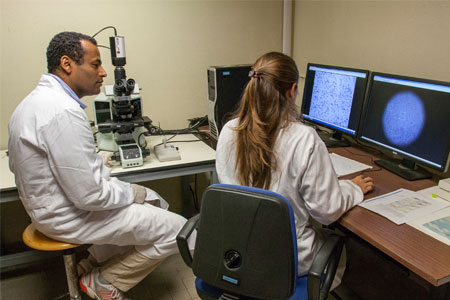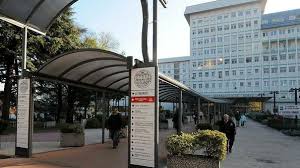- Authors:
-
Poluzzi, E.; Raschi, E.; Motola, D.; Moretti, Ugo; De Ponti, F.
- Title:
-
Antimicrobials and the Risk of Torsades de Pointes: The Contribution from Data Mining of the US FDA Adverse Event Reporting System
- Year:
-
2010
- Type of item:
-
Articolo in Rivista
- Tipologia ANVUR:
- Articolo su rivista
- Language:
-
Inglese
- Format:
-
A Stampa
- Referee:
-
No
- Name of journal:
- Drug Safety
- ISSN of journal:
- 0114-5916
- N° Volume:
-
33
- Number or Folder:
-
4
- :
- ADIS
- Page numbers:
-
303-314
- Keyword:
-
antimicrobials; torsades de pointes
- Short description of contents:
- Drug-induced torsades de pointes (TdP) is a complex regulatory and clinical problem due to the rarity of this sometimes fatal adverse event. In this context, the US FDA Adverse Event Reporting System (AERS) is an important source of information, which can be applied to the analysis of TdP liability of marketed drugs. To critically evaluate the risk of antimicrobial-induced TdP by detecting alert signals in the AERS, on the basis of both quantitative and qualitative analyses. Reports of TdP from January 2004 through December 2008 were retrieved from the public version of the AERS. The absolute number of cases and reporting odds ratio as a measure of disproportionality were evaluated for each antimicrobial drug (quantitative approach). A list of drugs with suspected TdP liability (provided by the Arizona Centre of Education and Research on Therapeutics [CERT]) was used as a reference to define signals. In a further analysis, to refine signal detection, we identified TdP cases without co-medications listed by Arizona CERT (qualitative approach). Over the 5-year period, 374 reports of TdP were retrieved: 28 antibacterials, 8 antifungals, 1 antileprosy and 26 antivirals were involved. Antimicrobials more frequently reported were levofloxacin (55) and moxifloxacin (37) among the antibacterials, fluconazole (47) and voriconazole (17) among the antifungals, and lamivudine (8) and nelfinavir (6) among the antivirals. A significant disproportionality was observed for 17 compounds, including several macrolides, fluoroquinolones, linezolid, triazole antifungals, caspofungin, indinavir and nelfinavir. With the qualitative approach, we identified the following additional drugs or fixed dose combinations, characterized by at least two TdP cases without co-medications listed by Arizona CERT: ceftriaxone, piperacillin/tazobactam, cotrimoxazole, metronidazole, ribavirin, lamivudine and lopinavir/ritonavir. Disproportionality for macrolides, fluoroquinolones and most of the azole antifungals should be viewed as 'expected' according to Arizona CERT list. By contrast, signals were generated by linezolid, caspofungin, posaconazole, indinavir and nelfinavir. Drugs detected only by the qualitative approach should be further investigated by increasing the sensitivity of the method, e.g. by searching also for the TdP surrogate marker, prolongation of the QT interval. The freely available version of the FDA AERS database represents an important source to detect signals of TdP. In particular, our analysis generated five signals among antimicrobials for which further investigations and active surveillance are warranted. These signals should be considered in evaluating the benefit-risk profile of these drugs.
- Web page:
-
http://dx.doi.org/10.2165/11531850-000000000-00000
- Product ID:
-
55481
- Handle IRIS:
-
11562/341178
- Deposited On:
-
April 26, 2010
- Last Modified:
-
April 14, 2023
- Bibliographic citation:
-
Poluzzi, E.; Raschi, E.; Motola, D.; Moretti, Ugo; De Ponti, F.,
Antimicrobials and the Risk of Torsades de Pointes: The Contribution from Data Mining of the US FDA Adverse Event Reporting System
«Drug Safety»
, vol.
33
, n.
4
,
2010
,
pp. 303-314
Consulta la scheda completa presente nel
repository istituzionale della Ricerca di Ateneo 








